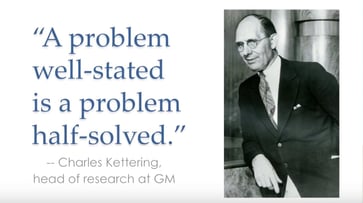 A problem well stated is half solved.
A problem well stated is half solved.
The Jolt Effect authors Matthew Dixon and Ted McKenna discovered a challenge most sales teams and salespeople are unaware of.
It’s dramatically eroding sales conversions.
Dixon and McKenna believe many salespeople are focused on overcoming what’s been the biggest sales obstacle, the “customer’s status quo.” It’s a formidable enemy—one that salespeople lose to all the time because human beings have a deep-seated bias for things to remain as they are.
What happens when the customer agrees that the status quo is unacceptable, that your solution can help them attain their objectives, their whole buying committee is on board . . . and you still lose?
Dixon and McKenna found anywhere between 40 percent and 60 percent of deals today end up stalled in “no decision” limbo.
Across all the deals Dixon and McKenna studied, only 44 percent of deals ended up lost to inaction due to the customer’s preference for the status quo—either not believing things are bad enough to change or not agreeing the vendor’s solution represents a more compelling alternative.
But 56 percent of the time, the customer expresses a desire to abandon their status quo and move forward in a new way with the vendor’s solution but, for one reason or another, is unwilling or unable to decide and commit.
Trying to Solve the Wrong Problem
When customers balk and start to get cold feet, sellers tend to go back to the well. They assume it must be because they haven’t successfully overcome the customer’s status quo.
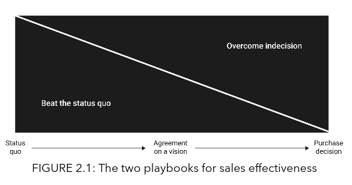 The Jolt Effect research reveals losing to the status quo is one of two possible reasons a deal can be lost to inaction. It’s actually the less menacing of the two. While the customer’s preference for the status quo is a significant obstacle every salesperson must overcome, there is a second, more challenging obstacle. It remains even after the status quo has been defeated: the customer’s own inability to decide.
The Jolt Effect research reveals losing to the status quo is one of two possible reasons a deal can be lost to inaction. It’s actually the less menacing of the two. While the customer’s preference for the status quo is a significant obstacle every salesperson must overcome, there is a second, more challenging obstacle. It remains even after the status quo has been defeated: the customer’s own inability to decide.
Why is Customer Indecision so Dangerous?
- Indecision has a more powerful grip on the customer’s mind than any preference they may have for the status quo. Customer indecision, however, is driven by a separate and distinct psychological effect called omission bias, which is the customer’s desire to avoid making a mistake. Customers, it turns out, are much less worried about missing out than they are about messing up.
- Indecision is extremely difficult for salespeople to detect. Because it is driven by deeply personal fears, indecision is not something that customers openly discuss with salespeople. In fact, it’s often something customers aren’t even aware they’re struggling with at all. Nearly 87 percent of sales opportunities contain either moderate or high levels of indecision. And it is toxic: as indecision increases, win rates plummet.
- Drivers of indecision are getting worse as the customer buying environment changes. Indecision has a set of discrete psychological drivers that are fueled by environmental factors beyond our control. As the number of options available to customers increases, as the amount of information available to research those options expands, and as the cost and risk of vendor solutions continue to rise, so does the tendency for customers to become indecisive and, do nothing.
- Salespeople are unknowingly contributing to the problem. The conventional wisdom is the status quo is the salesperson’s biggest competitor. Overcoming indecision requires a different approach from what is used to defeat the status quo. Where overcoming the status quo is about dialing up the fear of not purchasing, overcoming indecision is about dialing down the fear of purchasing. When salespeople use the status quo playbook on a customer who is, struggling with indecision, the customer becomes more indecisive, increasing the odds the deal will end up not closing.
Overcoming Customer Indecision - The “Lead Steer Effect”
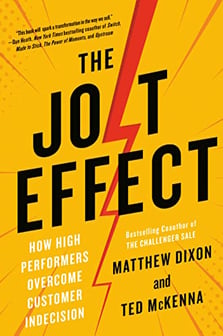 Research shows the best sales reps have a knack for figuring out new approaches to systemic problems. They’re gifted at adapting to new approaches to systemic problems when no playbook exists. They adapt to new challenges and overcome whatever stands in their way.
Research shows the best sales reps have a knack for figuring out new approaches to systemic problems. They’re gifted at adapting to new approaches to systemic problems when no playbook exists. They adapt to new challenges and overcome whatever stands in their way.
Researchers refer to this as the “lead steer effect”: the leaders in the group change direction as they spot new obstacles and opportunities. The rest of the herd follows. If you want to know what everybody will be doing in the future, look at what the leaders are doing now.
The Jolt Effect’s research team used machine learning to study millions of sales conversations across industries.
The result: a new playbook, based on four unique behaviors that high performers use for navigating and overcoming customer indecision.
This is what the authors call the JOLT method. It’s purpose-built for overcoming customer indecision.
To create an environment where everyone is inspired to give their best, contact Positioning Systems today to schedule a free exploratory meeting.
Growth demands Strategic Discipline.
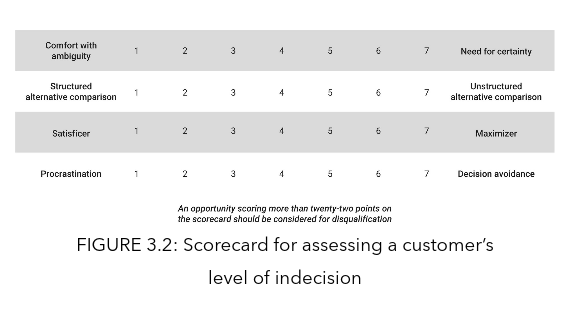 How do the best salespeople move Indecisive Buyers to become sales? We’ll explore the first of four behaviors high performers use for overcoming indecision, “judging the indecision" in our next blog.
How do the best salespeople move Indecisive Buyers to become sales? We’ll explore the first of four behaviors high performers use for overcoming indecision, “judging the indecision" in our next blog.
Building an enduring great organization requires disciplined people, disciplined thought, disciplined action, superior results, producing a distinctive impact on the world.
Discipline sustains momentum, over a long period of time, laying the foundations for lasting endurance.
 A winning habit starts with 3 Strategic Disciplines: Priority, Metrics, and Meeting Rhythms. Forecasting, accountability, individual, and team performance improve dramatically.
A winning habit starts with 3 Strategic Disciplines: Priority, Metrics, and Meeting Rhythms. Forecasting, accountability, individual, and team performance improve dramatically.
Meeting Rhythms achieve a disciplined focus on performance metrics to drive growth.
Let Positioning Systems help your business achieve these outcomes on the Four most Important Decisions your business faces:
|
DECISION |
RESULT/OUTCOME |
|
PEOPLE |
|
|
STRATEGY |
|
|
EXECUTION |
|
|
CASH |
|
Positioning Systems helps mid-sized ($5M - $500M+) businesses Scale-UP. We align your business to focus on Your One Thing! Contact dwick@positioningsystems.com to Scale Up your business! Take our Four Decisions Needs Assessment to discover how your business measures against other Scaled Up companies. We’ll contact you.
NEXT BLOG – Judging Buyer Indecision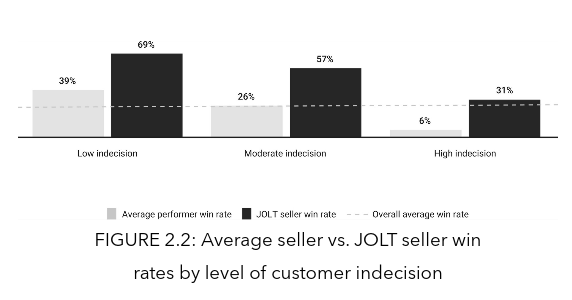






.jpeg?width=150&height=135&name=Hand%20with%20marker%20writing%20the%20question%20Whats%20Next_%20(1).jpeg)

